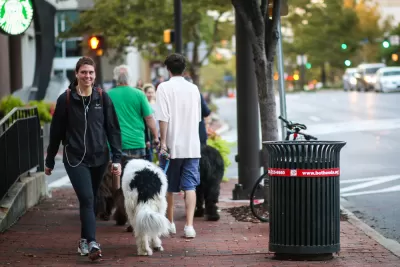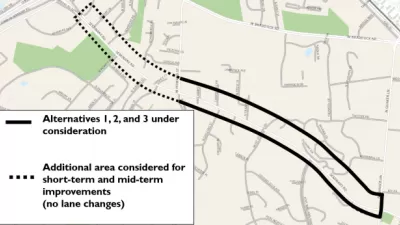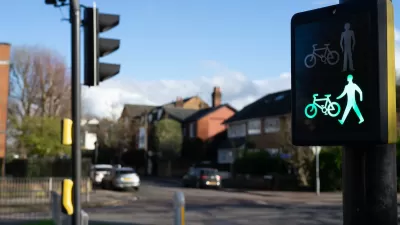The draft new Montgomery County Complete Streets design guide is a key tool for achieving the goals set out by the county's Vision Zero Action Plan.

Montgomery County, Maryland recently released the draft Montgomery County Complete Streets design guide ahead of a public review process expected to culminate before the County Council in January 2021.
"Complete Streets are roadways that are designed and operated to provide safe, accessible, and healthy travel for all users of the roadway system, including pedestrians, bicyclists, transit riders, and motorists," according to the Montgomery Planning website that shares the draft.
According to the website, the Design Guide is designed to offer flexibility to the various communities in the county while adhering to three principles: safety, sustainability, and vitality. The Complete Streets Design Guide is intended to further the county's Vision Zero goals to reduce traffic fatalities.
Given the current debate about the centering of equity in transportation planning and the need for planners to address the lack of safety for people of color while traveling on every available mode of transportation, I did a quick search and found only two uses of the word equity—both times mentioning that traffic collisions disproportionately affect people of color, but in neither case offering any specifics about how the deployment of complete streets principles for the Vision Zero agenda would address disparities in traffic safety or access to mobility.
The history of planning in Montgomery County is fraught with criticisms of discriminatory practices, but some local officials and advocates have been moving the needle toward equity in recent months.
FULL STORY: Complete Streets Design Guide

Planetizen Federal Action Tracker
A weekly monitor of how Trump’s orders and actions are impacting planners and planning in America.

Chicago’s Ghost Rails
Just beneath the surface of the modern city lie the remnants of its expansive early 20th-century streetcar system.

San Antonio and Austin are Fusing Into one Massive Megaregion
The region spanning the two central Texas cities is growing fast, posing challenges for local infrastructure and water supplies.

Since Zion's Shuttles Went Electric “The Smog is Gone”
Visitors to Zion National Park can enjoy the canyon via the nation’s first fully electric park shuttle system.

Trump Distributing DOT Safety Funds at 1/10 Rate of Biden
Funds for Safe Streets and other transportation safety and equity programs are being held up by administrative reviews and conflicts with the Trump administration’s priorities.

German Cities Subsidize Taxis for Women Amid Wave of Violence
Free or low-cost taxi rides can help women navigate cities more safely, but critics say the programs don't address the root causes of violence against women.
Urban Design for Planners 1: Software Tools
This six-course series explores essential urban design concepts using open source software and equips planners with the tools they need to participate fully in the urban design process.
Planning for Universal Design
Learn the tools for implementing Universal Design in planning regulations.
planning NEXT
Appalachian Highlands Housing Partners
Mpact (founded as Rail~Volution)
City of Camden Redevelopment Agency
City of Astoria
City of Portland
City of Laramie





























